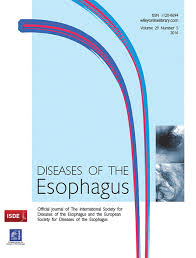Velanovich V
Dis Esophagus. 2007;20(2):130-4.
Abstract
The Gastroesophageal Reflux Disease-Health Related Quality of Life (GERD-HRQL) instrument was introduced approximately 10 years ago to provide a quantitative method of measuring symptom severity in gastroesophageal reflux disease (GERD). Since that time the instrument has been used to assess treatment response to medication, endoscopic procedures, and surgery for GERD. However, the development of the instrument has progressed over the course of several years, and there is no one source which reviews this progress. The purpose of this article is to summarize the development and testing of the GERD-HRQL. The GERD-HRQL was initially developed to measure the typical symptoms of GERD. It was initially determined to have face validity and subsequent studies assessed its content validity, criterion validity, concurrent validity, predictive validity and construct validity. Reliability was determined by the test-retest method. Responsiveness was determined by the effects of treatment. This instrument is practical, with little administrative burden. There are few missing responses. Because there are 51 possible scores, the instrument has a high level of precision; and because of the response anchors, cannot have a floor effect, and only 4/372 patients reached the highest score of 50, implying little ceiling effect. The instrument has been translated into several languages, and appears valid, reliable and practical in each.
Link to open access PDF: Velanovich V; Dis Esophagus. 2007;20(2):130-4.


